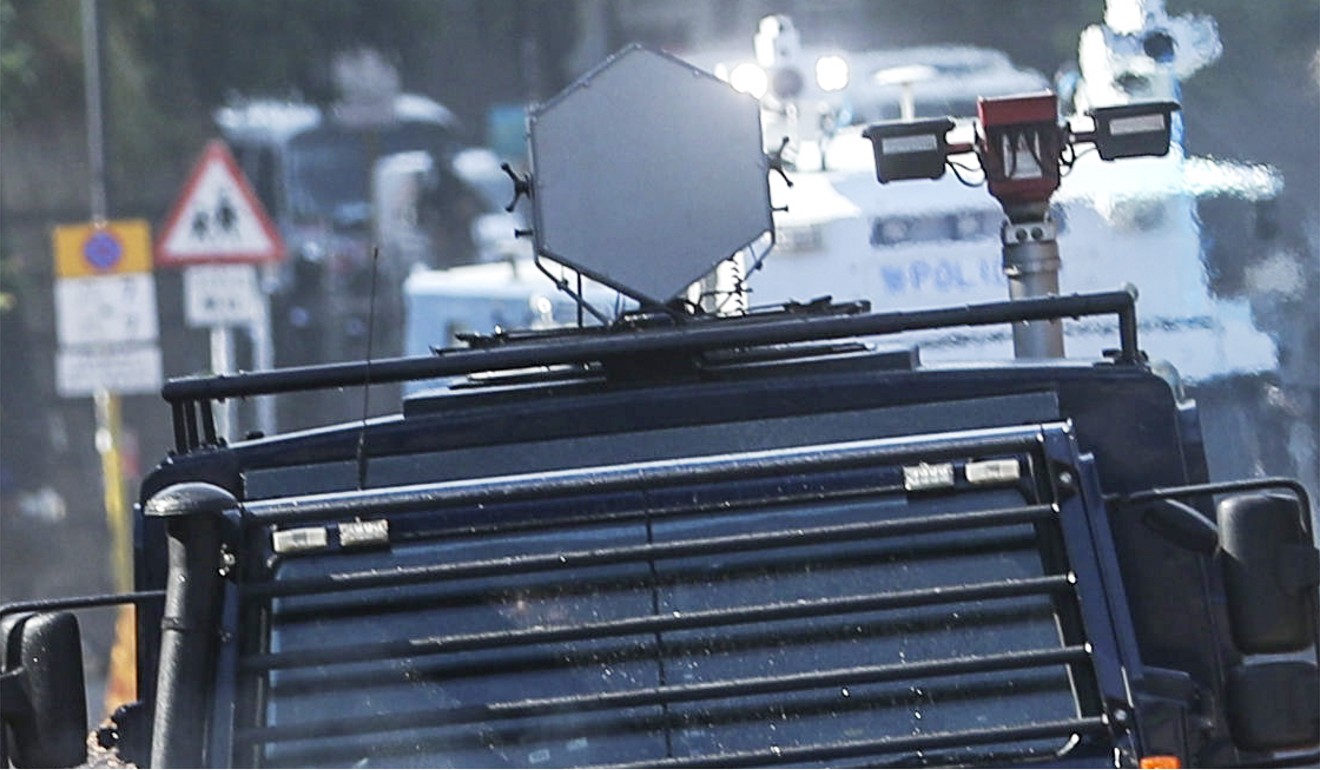
Hong Kong protests: police use controversial anti-riot sound device for first time, rejecting claims it is harmful
- Police spokesman confirms force deployed a long-range acoustic device, installed on top of a Unimog armoured vehicle, to issue warnings to rioters
- System does not cause dizziness, nausea or a loss of sense of direction as some reports claim, he says
Hong Kong police have for the first time used a controversial anti-riot sound device they bought 10 years ago, rejecting claims by activists that it is a weapon that can cause harm.
A police spokesman confirmed the force had deployed a long-range acoustic device (LRAD), installed on top of a Unimog armoured vehicle, to issue warnings to rioters.
He said the device could convey important messages over a long distance in a noisy environment and that the force stressed that it was not a weapon but a broadcasting system.
“Unlike what is said in individual media reports, the LRAD does not generate ultra-low frequency sound which will cause dizziness, nausea or a loss of sense of direction,” the spokesman said.
He said such rumours were false and the force had strict guidelines and regulations on using the system.
The government said in 2012 that when it purchased the Unimog in 2009, two LRADs with an effective transmission range of about 300 metres (984 feet) were also bought.
It said the LRADs came with an “alert tone” function, which was similar to the siren used by police and the fire service, with a frequency within the normal hearing range of people.

Icarus Wong Ho-yin of Civil Rights Observer was sceptical, saying similar devices used by the New York Police Department had reportedly made protesters dizzy.
“The NYPD also said it was not a weapon but protesters felt sick after exposure. And the device may fit the definition of a weapon because of this,” Wong said, adding that the public should keep a watch on how police might use LRADs again.

